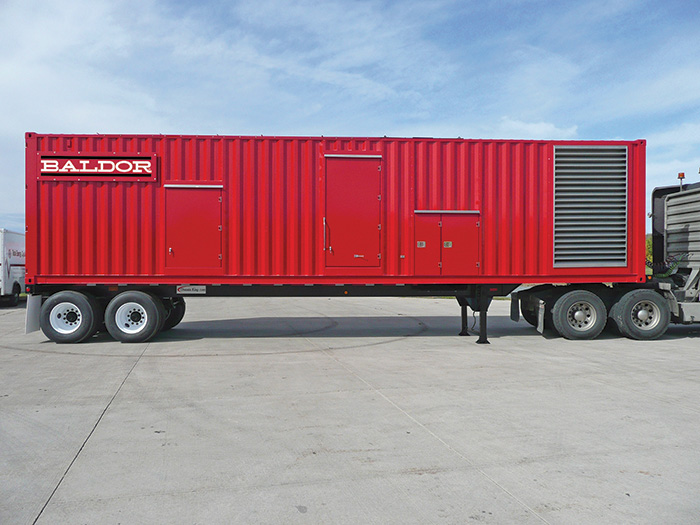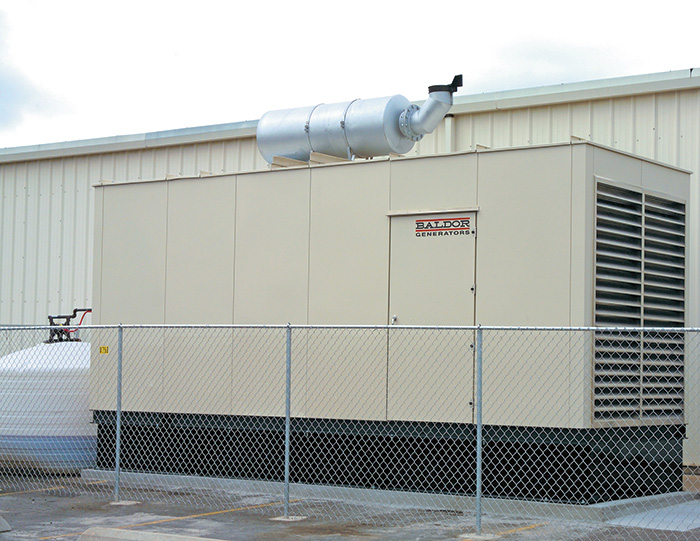Pumps & Systems, March 2013
Generator sets are available in a wide range of power ratings—from small, portable sets to mobile power systems or large stationary generator sets supplying power in the demanding scenarios worldwide. To determine if a generator set installation is required, the intended application, geographical rules and regulations and proper sizing of the generator set must be considered.
Application
Generator sets are used in many applications. The first consideration is to determine the generator’s intended use. Will it be transported from jobsite to jobsite, provide relief in the event of a catastrophic event, or will it be used to provide power during peak demands? The intended application must be reviewed to ensure that the correct equipment is specified and installed. When deciding if mobile power, emergency power, or a continuous or peak shaving power system is needed, several factors must be addressed.
Diesel mobile and continuous or peak shaving power systems (stationary nonemergency) must comply with the latest Environmental Protection Agency (EPA) engine emission regulations. These have become one of the most discussed topics in the power generation industry. They must be driven by an EPA-compliant certified interim Tier 4 or a Tier-4-capable engine. By 2015, products in a mobile, continuous or peak shaving application will need to meet the stringent emission regulations of Tier 4 unless the manufacturer uses the Transition Provisions for Equipment Manufacturers Program. This program gives the manufacturer flexibility to design products in a timely manner to meet emission regulations.
Emergency power systems have several different requirements. The three classifications for power systems are emergency systems, legally required standby systems and optional standby systems.
Articles 700, 701 and 702 from the National Electric Code (NEC) explain each classification. Article 700 details emergency systems, which are required to automatically supply illumination, power or both to designated areas essential to human safety if the normal power supply fails. In Article 701, legally required standby systems are intended to automatically supply power (other than those classified as emergency systems) to designated areas if power fails and could result in safety hazards and hamper rescue efforts. Optional standby systems, highlighted in article 702, are installed to supply power to public or private facilities where human safety does not depend on the performance of the system and can supply power automatically or manually.

Mobile generator sets provide temporary relief.
Fuel
When choosing a fuel source, diesel, natural gas and liquid propane have advantages and disadvantages. For example, diesel is portable, easy to store and readily available. Diesel’s disadvantage is its limited shelf life (10 to 12 months). Also, the overall cost of a diesel-driven power system is typically higher because of fuel storage requirements and the need to refill the fuel as it is consumed.
Another option and a cleaner burning fuel is liquid propane. Liquid propane is portable and easy to store. It also has a longer shelf life than diesel.
The third option for fuel is natural gas. It burns cleaner than diesel and is the easiest of the three to obtain. Because of a surplus as a result of the shale gas boom in North America, there is a practically unlimited supply. With the advantages of natural gas comes the hazard of leaky or bursting pipes. Because of these hazards, it cannot be used in life safety applications. Also, much more natural gas is needed to produce the same amount of power when compared to other fuels. When making this crucial decision, federal, municipal, state and local codes can help define which fuel source should be used.
Agency Approvals
Minimum requirements may need to be met when installing a generator set in certain geographical locations. Third-party safety certification standards—such as Underwriters Laboratories UL2200 health and safety of use standards, National Fire Protection Association (NFPA) 110 fire protection standards and/or NFPA 20 installation of stationary fire pumps for fire protection standards—can ensure that the power system is appropriate for the application. Contacting the local authority having jurisdiction (AHJ) can provide clarity of federal, state, municipal and local rules and regulations.
The AHJ has the final say in the generator set installation and commissioning.
If UL2200 or NFPA 110 is specified at the time of order, several requirements need to be met to ensure that the complete system is a safe and reliable piece of equipment. For instance, UL2200 requires additional testing and documentation if the generator is wrapped in an enclosure or any modifications are made to the generator set after it leaves the original manufacturer’s production site. To carry the UL listing, all system components must meet the UL standards.
NFPA 110 sites the importance of the power system to human safety, the amount of time it takes the set to be at full power, and the runtime before the power system must be refueled or recharged. If using the generator set to supply power to a fire pump motor, NFPA 20 standards and NEC Article 695 standards must be met. The standards make certain that the fire pump motor runs when needed. Correctly calculating the required loads helps properly size the set.
Diesel fuel tanks can be installed as a sub-base for generator sets.
Sizing
Properly sizing the generator set for operating speeds of motors and fire pump motors is crucial. More importantly, sizing the generator set to start a motor versus a fire pump motor is the more difficult task. Typical motor starting kilovolt amperes (kVA) allows a 30 percent voltage dip, while NEC 695-7 permits a voltage drop of only 15 percent at the controller line terminals when starting a fire pump motor. To meet this requirement, the generator set must be upsized by as much as three times.

To carry a UL2200 listing, the generator set components need to safely operate as a complete system.
The generator set can carry a UL2200 listing if the circuit breaker does not exceed the standard’s 125-percent threshold. If not sized properly, the third-party certifications may not apply. The generator set’s fuel supply shall be sufficient to provide eight hours of fire pump operation at 100 percent of the rated pump capacity and supply required for other demands according to NFPA 20. Contacting federal, state, municipal and local resources can help specify the proper unit. P&S

